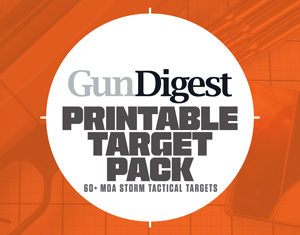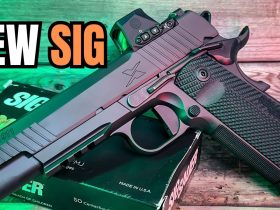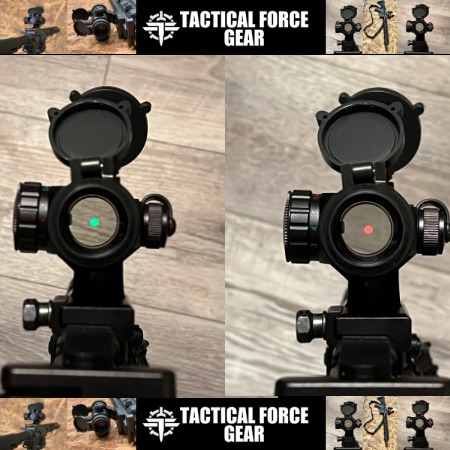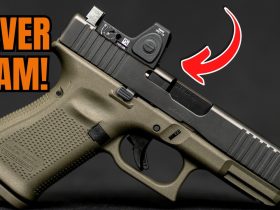If you have to defend yourself, you don’t want to be thinking about your trigger press. Here we discuss how to train your trigger finger’s muscle memory so you don’t have to.
If you go to school to learn how to shoot a defensive handgun, you can pretty much bet the program of instruction will follow a set format. First, they’ll teach you about the different kinds of handguns and the four rules of firearms safety. Then, before the shooting commences, you’ll receive a lecture about sight alignment, sight picture and trigger control. The instructors will most likely summarize this segment with something like the secret to accurate shooting is maintaining a proper sight picture while pressing the trigger.
This is indeed the secret to shooting. If you’re a target shooter, this is how you do it successfully. If you’re shooting to save your life, this is how you stay alive. No matter what you’re shooting, maintaining the proper sight picture throughout the trigger press is the key to getting hits. The problem with this advice is that it suggests maintaining the sight picture and properly pressing the trigger are equally important. And, well, they are. However, it also suggests you need to learn them simultaneously. Let me see if I can explain this problem that’s causing a conundrum.

Understanding and learning proper sight alignment and the correct sight picture is the easiest part of shooting. I can demonstrate it to you one time, and you’ll remember it for life. It’s simple: Center the front sight in the rear sight notch so it’s not above or below the top of the rear sight. With the sights so aligned, place the front sight on the spot on the target where you want your bullets to go. Granted, there are some variations, such as with XS Big Dot sights and with a dot in a reflex sight. But the point is, this isn’t rocket science or something you need to study or practice. You see it once, and it’s with you forever.


On the other hand, the proper trigger press—one that won’t disturb the sight picture—is devilishly difficult to explain and even harder to execute. In fact, you’ll spend the rest of your life trying to master the perfect trigger press, and it’ll never happen. You might get very good at pressing a trigger, but you’ll never be good enough to do it perfectly every time. If complete mastery of the trigger was possible, we’d all be grand masters, deadeye Dicks and on the Olympic shooting team.
One of the things that makes learning the proper trigger press so difficult is trying to learn how to do it while also not disturbing the sight picture. Oh, but you say that’s what we’re supposed to do, right? Ultimately, yes, that’s the goal. The problem is trying to accomplish that two-pronged goal before you know how to correctly execute both aspects of it. Let’s use basketball as an analogy. One of the most important basic skills of basketball is being able to dribble down the court while walking, jogging and running. Walking, jogging and running are easy; dribbling is hard. What’s even harder is dribbling while walking, jogging or running. You must learn to dribble effectively before ever attempting to do it while moving.
The same applies to shooting a handgun. Aligning the sights correctly, with the proper sight picture—just like walking, jogging or running—is easy. Conversely, properly pressing a trigger is difficult, and learning to do it without disturbing the sights is even more difficult—to the nth power more difficult. I’ve seen shooters struggle with only minimal improvement for years while trying to learn how to press the trigger and also keeping the sights aligned and on target. So, what’s the answer?


The answer is to practice pulling the trigger and get damned good at it before worrying about the sights. Pressing the trigger is a motor skill, and there are essentially three stages of motor learning. First you must identify and understand the skill you need to learn. Second, you must refine your movements and correct errors. And finally, you must work to make the movement automatic and consistent. Some call this process the establishment of muscle memory, but, of course, muscles don’t have memories. What you’re actually doing is conditioning your brain to drive physical activity without deliberate and conscious thought.
Let’s use another analogy. Playing a song on a guitar is a very complex physical activity. It requires the combination of a variety of chords and notes, executed by various fingers on both hands, and done in rhythm. However, if you already know how to execute the chords, and if you have practiced transitioning between them enough, playing the song is much easier. Your brain says, “This chord now,” and it happens, without the conscious thought of where to place your fingers, and without any consideration of how hard you need to press with each finger.


Experts on muscle learning suggest it takes anywhere from 3,000 to 50,000 repetitions to establish muscle memory. For the handgun shooter, this means you should conduct at least 3,000 trigger presses before you ever attempt to shoot. Of course, the number of repetitions required will be different for everyone. Fortunately, this is easy to do with dry-fire or dry practice. However, the mistake many make is combining the initial learning of the trigger press with sight alignment during dry practice. Isolating the trigger press and learning to do it, singularly—without moving the handgun—is key.
If you cannot press the trigger correctly you cannot get your hits—period. Mastery of the trigger helps you avoid target panic, where you’re hesitant to press the trigger for fear of moving the sights. It’ll also help you avoid jerking the trigger at the instant you see the sight alignment and sight picture you desire.


You may be wondering why shooting schools don’t teach this method of learning how to manipulate a trigger. The answer is very simple: They don’t have time. Some shooting schools last only two days, and even the weeklong schools have a lot of other stuff they want to teach you, and that you want to learn. It’s incumbent upon you to learn the trigger press beforehand, and with judicious dry practice it’s something you can get very good at on your own.
I know this process works because it’s the method I used to teach my kids to shoot. They all spent many hours pressing the trigger of a laser training gun like the SIRT from Next Level Training before they ever fired a shot. Then, they did the same with the handgun they were going to use. Eventually—just as they did—you must combine the trigger press with proper sight alignment, but it’ll all be much easier if you know how to press a trigger correctly first.
Editor’s Note: This article originally appeared in the May 2025 issue of Gun Digest the Magazine.
More On Shooting Skills:
Why You Can Trust Gun Digest
Since 1944, Gun Digest has been a trusted authority on firearms, shooting and shooting gear, delivering expert firearms reviews backed by nearly a century of experience. We go beyond standard reviews, combining hands-on independent gun testing, in-depth research, and expert insights from industry professionals and manufacturers.
Our reviewers are the bedrock of our testing and come from a comprehensive cross section of the shooting world. Their diverse backgrounds include law enforcement professionals, military veterans, competitive shooters, seasoned hunters and life-long firearms enthusiasts. In addition to being firearm experts, we are also thorough journalists adhering to the strictest standards of the profession.
For our readers, this means objective, unbiased reviews, free from outside influence. Our priority is to provide the information you need to make informed decisions—whether a firearm or piece of gear is a must-have investment or one to pass on.
Find out more about our Editorial Standards and Evaluation Process


Next Step: Get your FREE Printable Target Pack
Enhance your shooting precision with our 62 MOA Targets, perfect for rifles and handguns. Crafted in collaboration with Storm Tactical for accuracy and versatility.
Subscribe to the Gun Digest email newsletter and get your downloadable target pack sent straight to your inbox. Stay updated with the latest firearms info in the industry.
Read the full article here






Leave a Reply